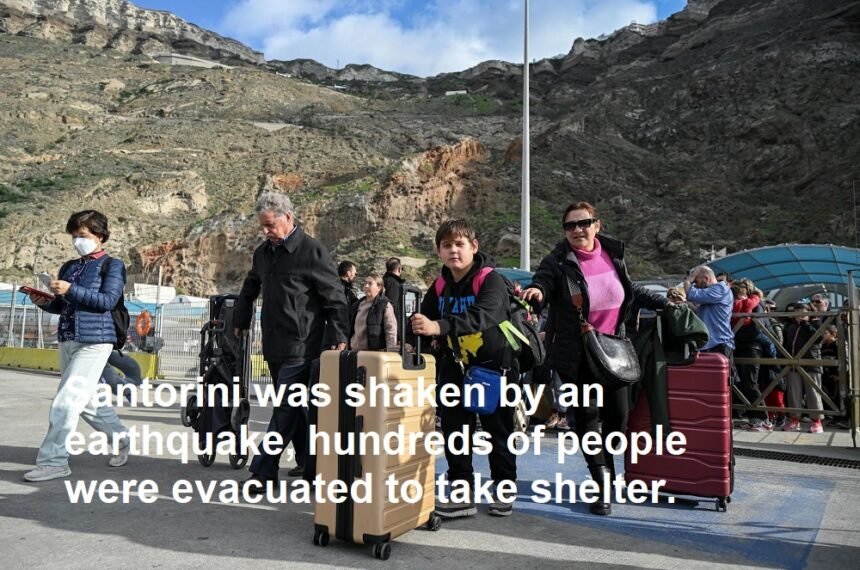In early February 2025, the picturesque Greek island of Santorini experienced a significant seismic event that led to the evacuation of thousands of residents and tourists. The island, renowned for its stunning sunsets and white-washed architecture, was shaken by a series of earthquakes, prompting concerns about safety and potential aftershocks.
Seismic Activity Details
The seismic activity commenced over the weekend, with more than 200 tremors recorded in the Aegean Sea region between Santorini and Amorgos. The most substantial of these tremors reached a magnitude of 5.1, causing noticeable shaking across the island. The epicenters were primarily located between Thira and Amorgos, areas known for their geological activity.
Evacuation Measures
In response to the escalating seismic activity, Greek authorities initiated evacuation protocols to ensure the safety of both residents and visitors. By Tuesday, more than 6,000 individuals had departed the island via ferries and flights to Athens. Transportation services were operating at full capacity to accommodate the sudden surge in demand. The government also closed schools on Santorini and neighboring islands, including Ios, Amorgos, and Anafi, as a precautionary measure.
Government and Expert Responses
The Greek Civil Protection Ministry, in collaboration with local fire departments, closely monitored the situation through daily briefings. Authorities advised residents to remain vigilant and prepared for potential stronger quakes. Precautionary recommendations included draining swimming pools to prevent water damage during tremors and avoiding large indoor gatherings to reduce the risk of injury from structural damage.
Seismologists clarified that the recent tremors were attributed to tectonic activity rather than any reawakening of Santorini’s dormant volcano. Gerasimos Papadopoulos, a prominent seismologist, indicated that the pre-seismic sequence could persist for up to four months, suggesting that residents should be prepared for ongoing activity.
Public Reaction and Safety Measures
The continuous seismic activity led to heightened anxiety among the island’s inhabitants and visitors. Many chose to evacuate voluntarily, seeking refuge in less affected areas. The government deployed emergency rescue teams to Santorini to assist with evacuation efforts and provide support to those remaining on the island. The U.S. Embassy in Greece issued advisories to American travelers, recommending they avoid areas identified by Greek officials as high-risk and stay updated on local news for further developments.
Historical Context
Santorini’s geological history is marked by significant volcanic activity, most notably the massive eruption around 1600 BC that shaped its current caldera. While the recent seismic events are linked to tectonic movements rather than volcanic activity, the island’s past contributes to heightened sensitivity and concern regarding seismic occurrences.
Current Status and Future Outlook
As of now, seismic activity in the region continues, with experts closely monitoring for any signs of escalation. Authorities have emphasized the importance of preparedness and adherence to safety protocols. Residents and visitors are encouraged to stay informed through official channels and be ready to respond to any emergency directives.
In conclusion, the recent seismic events in Santorini have underscored the island’s vulnerability to natural phenomena. The proactive response from authorities and the community’s resilience have been pivotal in managing the situation. Ongoing vigilance and preparedness remain essential as the region navigates this period of heightened seismic activity.













